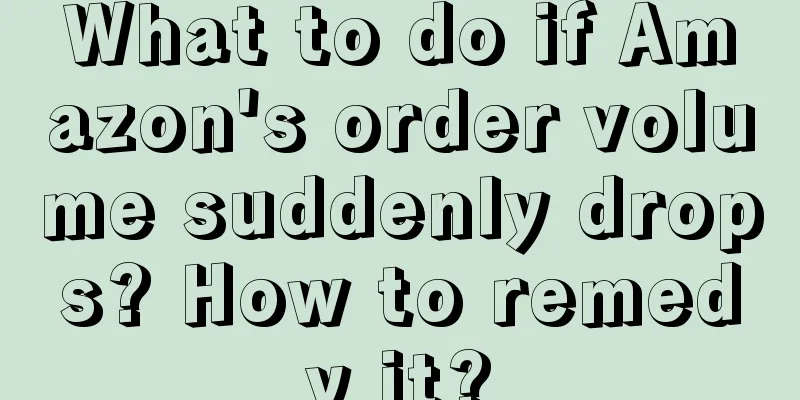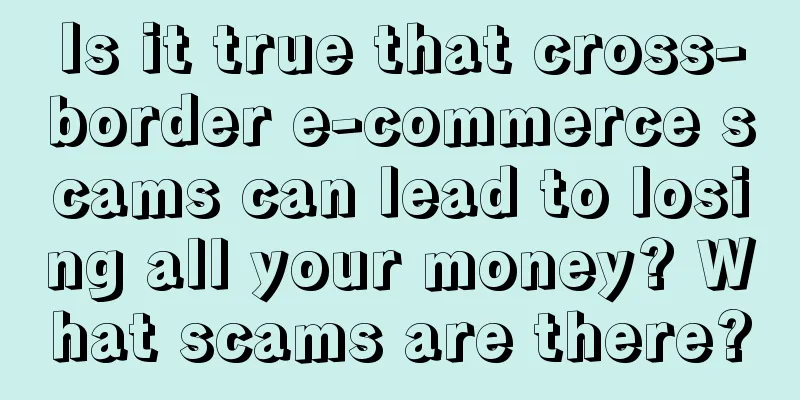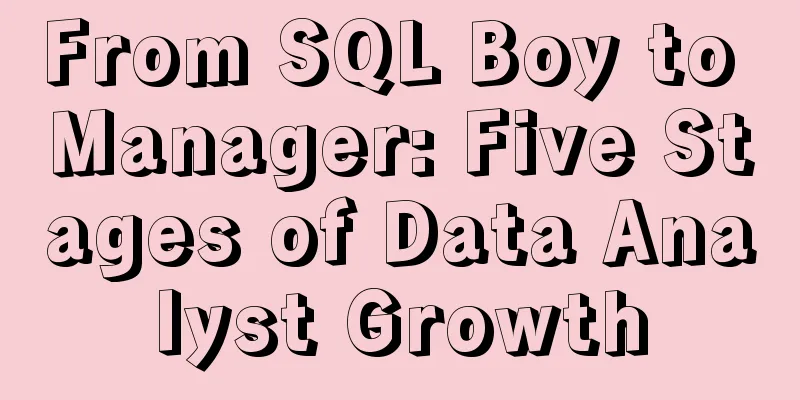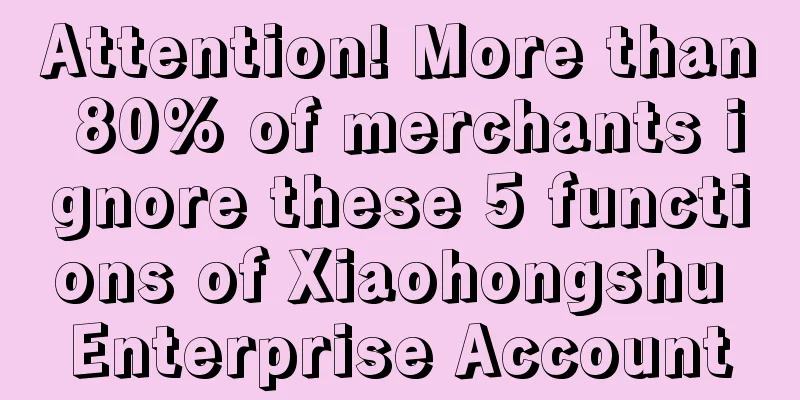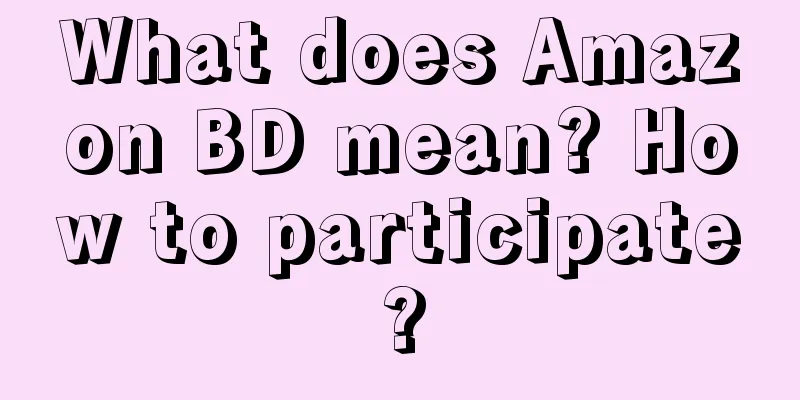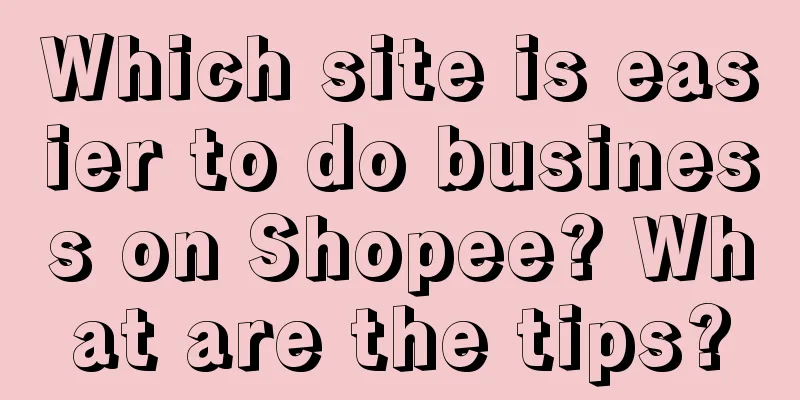Brand Marketing Guide
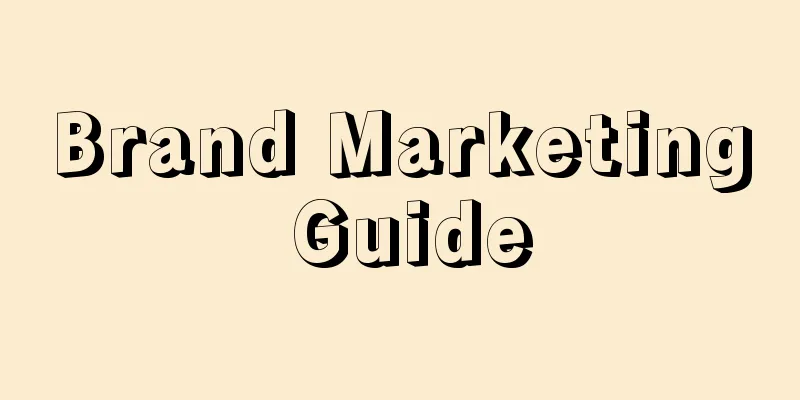
1. Product: Do a good job in marketing, find out the problems of consumers, and stimulate their desires1. What are the various products on the market used for? Products are used to solve "desires and problems" . Existence is reasonable. Where there are desires and problems, products are needed to solve the problems. 2. Edison said: "You don't know how much men and women like to enjoy, how greedy, how much they love to complain, and how much they love to find all kinds of problems." There are endless desires and problems in this world, and the "products" we create will never stop. When a product solves a desire and problem, it will give rise to new desires and problems, and the cycle repeats itself. 3. What is the greatest product in your mind? Which products have changed the world? 4.
5. The products listed above have one common characteristic: when they first appeared in the world, they instantly shocked the world and even completely changed the world and people’s lifestyles. 6. Find desires and problems, create conflicts, change the track, and reconstruct the market. The reason why continuous product innovation can succeed is essentially that human beings are born with the instinct to like the new and dislike the old, love leisure and hate work, and seek benefits and avoid harm. 7. There is a very short joke that says: "Who drives the world?" The answer is: "Lazy people". Facts have proved that the lazier people are, the more imaginations and designs they have that go beyond ordinary people, which ultimately makes our lives more and more convenient and comfortable; and when the product rises to the top of Maslow's needs, the product will involve social interaction and human nature, and the product will become complicated. 8. From simple to complex, and then from complex to simple, whether a product can survive in the world does not depend on whether the product is better or worse, but on whether the product solves the conflict between desire and problematic products. When the conflict continues to escalate, expand, and change, the product must iterate and innovate. If the conflict does not undergo an essential change, then the underlying function of the product does not need to change. 9. Why has the zipper not changed? A small plastic tag is better than a thousand buttons, so the zipper still maintains its original appearance! It is almost an "ultimate innovation and invention." Antibiotics, antibiotics, atomic bombs, and radar are named "the three major inventions during World War II." Miniskirts, the great design of Ms. Chanel, let women jump out of the old world of "as if they have no legs". From then on, the world belongs not only to men, but also to women. 10. The underlying functions of these products have not changed much so far, but they are still needed by the market! 11. What do you think is the value of a product? What is the premise of product innovation? Solve the conflicts, conflicts, and conflicts behind consumer desires and problems! 12. The best-selling products in the world are not necessarily the best products, but the products that can communicate with consumers, create value, and solve consumers' inner conflicts. Why is it that in our real life, "flowers" are always stuck on "cow dung", and the most beautiful girls in the school always marry not the boys with the best grades and the most handsome looks, but the boys who are willing to queue up for him to get food every day, send him flowers, buy her all kinds of small gifts, buy snacks, and bring local specialties? Beautiful girls are flowers, that is, "consumers", and " cow dung" is very good at communication and service, and can solve the inner conflicts of flowers. 13. Pay attention. Products are used to resolve the "conflict" behind consumer desires and problems. It comes from the three attributes of products: core product, physical product, and peripheral product. 14. The core product is the most basic and important part of solving the consumer's problem. It is the concentrated embodiment of the product's ability to resolve conflicts, and therefore it is also the real reason for consumers to buy. The core product is the benefit that consumers get from buying this product, just like girls buy cosmetics to make themselves look more beautiful, whiter skin, and shinier hair. Using core products to resolve consumer conflicts must be perceptible to consumers and have sufficient trust. If you use a random selling point to fool consumers, consumers will not believe it at all. 15. Physical products: This is the form in which the core product is realized, that is, the image of the entity and service provided by the product to the market. It is usually manifested in the product's quality, appearance, style, packaging and brand name. Physical products are the actual products you see, hold, use and feel. For example, is the cosmetic you hold a pearl whitening product or an amino acid freckle removal product? Is it water, lotion, essence or facial mask? 16. Peripheral products, which are all the additional services and benefits that customers get when they buy tangible products, including credit, insurance, installation, after-sales service, etc. For example, when you buy high-end cosmetics, the merchant will not only provide free skin testing, but also give away the subsequent skin management services. In simple terms, it means: buy products and get services for free. 17. In traditional commerce, most products only need to achieve one attribute of physical products to have a large market. However, in the era of smart commerce, the iteration speed of products is far beyond the imagination of ordinary people. Only by constantly breaking and reorganizing the triple attributes of products, breaking and reorganizing again, can there be continuous opportunities and space for product innovation. That is why some people say that in the new consumer era, all industries and products are worth redoing. 18. Make the new familiar, and the familiar new. In traditional industries, competition based on physical products has become fierce. If you can rise to the level of core product competition, and then create conflicts by enhancing the value of peripheral products, you can reconstruct the track. 19. For example, Haidilao, which originated in Chongqing, the hometown of hotpot, did not promote "authentic and delicious" but went the other way and promoted "service". It created new conflicts with its ultimate peripheral products and attracted many consumers and gained countless fans with its "abnormal" services such as "manicure, shoe polishing, baby watching". 20. Now that Haidilao has started to improve its service, does that mean it is no longer afraid of competition and can remain unchanged? Of course, it needs to change, so Haidilao still needs to constantly stand on the side of consumers, always understand their needs, and understand their conflicts that escalate due to new desires and problems. Only in this way can it always have the opportunity to have a good relationship with consumers. 21. When Haidilao was iterating its products, it once saw a conflict: a person wants to eat at Haidilao, but is afraid of being lonely eating alone. After seeing this conflict, Haidilao thoughtfully arranged a "friend" for the lonely consumer, who would sit opposite you and eat hot pot with you. This service was once rated "five stars of thoughtfulness" by Dianping. 22. Haidilao learned through Weibo that some consumers like Haidilao very much, but are very resistant to excessive service, which conflicts with consumer privacy. Haidilao immediately launched the "Do Not Disturb" service. If consumers do not want to be excessively disturbed by waiters, they can get a sign with "Do Not Disturb" written on it and put it in a conspicuous place. The waiters will only provide basic services such as serving dishes and clearing empty plates. On Dianping.com, consumers gave the "Do Not Disturb" service a high score of five stars, which shows that Haidilao has an accurate insight into consumer conflicts. Haidilao constantly explores the desires and problems that consumers encounter in "service" and constantly understands and escalates conflicts. Haidilao has been leading the way, far surpassing those catering brands known for their delicious food, and has gained great loyalty from consumers (no one can do anything about the epidemic, so don't blame Haidilao for its decline during the epidemic). 23. The best-selling products in the world are not necessarily the best products, but they are definitely the products that can best resolve consumer conflicts. The principle that all businesses are worth redoing is that if we cannot change the physical products, can we change the appeal of the core products? If we cannot change the core products, can we innovate peripheral products to provide consumers with a more convenient purchase path, a more pleasant purchase experience, and a more comfortable purchase prelude? 24. Excellent products meet the needs of consumers, and great products meet the desires of consumers. Therefore, to become an excellent or even great product, it is necessary to find the conflicts behind consumer desires and problems, and to find greater and more lasting opportunities for conflict. Products that succeed based on the times will die out as the times pass, but products that succeed based on human nature will make the products and brands become eternal symbols. The content that great brands ultimately communicate with consumers must be a concept that is higher than products and needs, and comes from people's seven emotions and six desires, and from human desires. Therefore, sports brands must firmly grasp the desire of sports spirit, and must grasp the desire of women to become more and more sexy. 25. Great products are products that can make consumers addicted, and to make consumers addicted, great conflicts must be resolved. The most important reason why cigarettes, alcohol, tea, cola, coffee, and milk tea can "rule" the world is that they all satisfy human desires without exception. 26. Products are the foundation of an enterprise. If your product does not resolve conflicts, then no matter how good your product is, how powerful its functions are, how beautiful its packaging is, or how low its price is, it will still be an irrelevant item to consumers. 27. When material demand is overloaded, the entrance of new products must be found from human desires in order to find a more effective market. The demand for products can be deduced from the desires of consumers. This is the best way. Diamonds have never been the most useful stone in the world, but they are the most valuable stone. Why? Because they create a desire for "sense of security" for love. Debes discovered the huge conflict that girls face when facing love. They long for love but worry about the fickleness of love. So it solved the conflict with the advertising slogan: Diamonds are forever, and diamonds are passed down forever. Diamonds are used as a promise of love, and the hardness of diamonds is converted into "promise of love", which brings girls a sense of security in love and solves the core conflict of girls in love. 28. Baudrillard said in his book Consumer Society: "Consumerism means that the purpose of consumption is not to meet actual needs, but to constantly pursue manufactured and stimulated desires." Demands make people identify, and desires make people yearn for them. Look at Valentine's Day, co-branded items, limited edition items, Pop Mart's blind boxes, and skins in games in our lives. These are not actual needs, but waves of consumer desires. 29. Desire drives product innovation, and desire drives human business progress. 2. Price: Do a good job in marketing, don’t ignore the price1. Price is a series of numbers, and the invention of numbers can be regarded as one of the greatest products on earth. Do you know who invented this "greatest product"? We call commonly used numbers Arabic numerals. According to the name, many people think that they were invented by Arabs. In fact, numbers were invented by ancient Indian scientist Baghdad, and later became known to the world after being spread by Arabs. 2. More than 1,700 years ago, Baghdad, an ancient Indian scientist, invented Arabic numerals. The oldest counting number was up to 3. In order to imagine the number "4", 2 and 2 had to be added together. 200 years later, Ayeh Bihait, an astronomer in the Punjab region of India, made a new breakthrough in simplifying numbers. He recorded the numbers in grids. If there was a symbol in the first grid, such as a dot representing "1", then the same dot in the second grid represented "10", and the dot in the third grid represented "100". Later, Indian scholars introduced the symbol for "0". It can be said that these symbols and representation methods are the "old ancestors" of Arabic numerals. 3. Another 400 years later, the Arabs conquered the Punjab region. They were surprised to find that the numbers in the conquered region were more advanced than theirs. So they tried to attract these numbers, brought them to Europe, and spread them. Because of the spread of the Arabs, this period also became the key node for the final international use of these numbers, so people called them "Arabic numerals." 4. The reason why I spend so much space to talk about the origin of numbers is that price is really too important in business . In business and marketing, it is no exaggeration to say that " pricing determines the world" 5. The invention of numbers makes it possible to correspond the value of each commodity to a price. However, human greed makes price a digital game : price can be a bait, a performance-to-price ratio, or even a symbol of social status. The relationship between price and value is no longer equal, and the price is no longer simply the price of the product, but the product's ability to solve user pain points and conflicts. 6. How to set the price? First of all, we need to understand the pain points and conflicts of users! Because consumers will only spend more time and money on products that can solve the pain points and conflicts they face. 7. The price of a complete product should include: raw materials, production costs, labor costs, transportation costs, management costs... even celebrity endorsement fees, advertising fees, online celebrity promotion fees, etc. How can consumers spend time calculating how much these are worth? They only walk through the streets, through stores, supermarket shelves, read Xiaohongshu, watch Douyin, listen to the narration of online celebrity anchors, and other clues to judge the price. Moreover, for most people, price memory is short-term memory, what they say and what they do are not the same thing, and how much they are willing to pay for a certain type of goods can change at any time. Consumers are mainly sensitive to relative differences, not absolute prices. This difference may be product differences, value differences caused by brand premiums, or differences in prices themselves... 8. But consumers don’t know that all this is a magic trick played by prices. This magic trick is like hypnosis, manipulating the hearts and minds of consumers, manipulating consumers to repeatedly wander between "real needs" and "vanity" and "taking advantage". In essence, we are not selling products through prices, we are selling prices. We are selling the prices that consumers are willing to pay for pain points and conflicts. 9. Most companies usually design a product first and then try to calculate the target price. But in some excellent companies, price is the key factor to be considered first. The sales price of the product is determined before it is developed, and the designers and developers choose to manufacture and design products based on the final selling price of the product. An excellent pricing strategy can solve consumers' pain points and conflicts, guide consumption, make consumers feel they are getting a bargain, and even stimulate consumers' vanity. Consumers seem to be surrounded and satisfied by different commodities and brands, but in fact they are hypnotized by various price magic and manipulated by the price strategies behind various commodities. An excellent pricing strategy can satisfy the conflict between consumers' desire to be "cheap" and "get a bargain", and can also solve the conflict between consumers' desire to buy and willingness to buy. There are five major strategies to use price to solve pain points and conflicts. 10. The first strategy: high price strategy (expensive). I am expensive! Expensive can allow consumers to quickly perceive the product's ability to solve pain points and conflicts, and quickly improve the product's sense of value in the minds of consumers. Consumers do not know the value of the product, but they can perceive the value of the product through the price. If your product can better solve the conflicts of consumers, you might as well set an "expensive" price for your product to reserve a more valuable brand space for the product in the minds of consumers. 11. The Nianzhi Brand Management I founded once planned for a wasabi brand. This wasabi brand was similar to the Japanese one. When we made the recipe more spicy, the production cost of each wasabi increased by only 10 cents. However, after the spicy taste was promoted, the price of each wasabi at the terminal was 1 yuan higher, and consumers still recognized the brand. This is because it solved the conflict in consumers' minds that they wanted a more spicy wasabi to achieve the sterilization effect. 12. If your product can better resolve consumer conflicts, you might as well set an "expensive" price for your product to reserve a more valuable brand space in the minds of consumers. Especially when competition rises from the material level to the spiritual level, and from product competition to brand competition, "expensive" will be associated with social attributes such as consumer status. Do you remember this line in Feng Xiaogang's movie "Big Shot": "Not seeking the best, but seeking the most expensive." Each of Zhong Xue Gao's ice creams is 200% more expensive than the same category. Why? What they are selling is the sense of value. Are the raw materials really that expensive? Not necessarily. 13. Someone disassembled Apple's hardware and said that the cost of the hardware is less than 2,000 yuan, so why is it sold for 10,000 yuan? Also , why are Moutai, Wuliangye, Mengzhilan, and Shuijingfang so expensive? The superior quality is only one aspect, the main reason is that they are the "most expensive" wine, and the "most expensive" wine should be used to entertain VIPs. 14. It is very difficult to get a bottle of Moutai liquor in the market now. Pan Changjiang’s recent live broadcast went wrong because he said during the live broadcast that he had dinner with the chairman of Moutai in private, and that the chairman of Moutai gave him the right to set prices, and that his Moutai liquor has the lowest price on the entire Internet. The value of Moutai today has long surpassed the competition between sauce-flavor and strong-flavor liquors, the competition between wine cellars, and the competition between hundreds of processes. When Moutai launched a price defense war, hoping to control the price at 1,499 yuan, someone on the Internet proposed: "Moutai, please stop the price defense war!" Moutai has always emphasized that it is for drinking, but in fact, for some consumers, Moutai is not just for drinking. The high price of Moutai is not just a recognition of the product value, it has risen to the social value of consumers. The conflict it solves is about the social needs of consumers. If Moutai is not the most expensive, how can we express our greatest respect for the distinguished guests we entertain? 15. The second strategy is the psychology of the medium cup. There is a short video shot by Luo Yonghao on the Internet. The video goes like this: Luo Yonghao went to Starbucks to buy coffee. He pointed to the middle cup among the three cups and said, "Give me this medium cup of Americano." The waiter corrected him and said, "Sir, this is a large cup, and the other one is a medium cup. The order is medium cup, large cup, and extra large cup." Luo Yonghao said, "I want this medium cup!" The Starbucks barista repeated again, saying, "Sir, this is a medium cup, medium cup, large cup, extra large cup...!" After repeating this over and over again, Luo Yonghao was so angry that he slapped himself... Luo Yonghao thought that Starbucks was being clever. He had a belief that companies shouldn't do this. So when he made a mobile phone, when the T1 was launched, he sold it for a whole number of 3,000 instead of 2,999. He thought that this was an insult to the intelligence of consumers. As we all saw the final outcome, the mobile phone company he ran stopped updating its products and was on the verge of bankruptcy. 16. Why doesn't Starbucks have small cups? In Starbucks, small cups are called "Tall". The reason for this was that Schultz wanted to save face for consumers and not make them feel embarrassed when they spend $4 on a small cup of coffee. This is a marketing trick to satisfy consumers' vanity, which shows how deep Schultz's understanding of consumers is. Starbucks employees are called "baristas", which also makes you feel high-class when you order a cup of coffee in Starbucks. 17. Starbucks does not have small cups, only medium cups, which has a better anchoring effect. Starbucks uses medium cups of coffee as the starting point for sales, which will subconsciously influence customers' judgment of the value of Starbucks coffee, and thus they will be able to accept a higher level of consumption. Therefore, when Starbucks' mineral water sells for 22 yuan, you may not think it is too expensive. This is the high price point set for you by the "medium cup". If you don't want your consumers to think you are too expensive, ask yourself if you have put your "cup" in the right place. 18. The third strategy: high cost performance. The first entry point for the Internet to destroy traditional enterprises is price. It is not enough to have unexpectedly low prices. It must be supplemented by strong subsidies. The "subsidies" must be given until consumers develop a habit and cannot quit. Wang Jianlin once had such concerns: Chinese people now compare prices on APPs when buying things. They buy from whoever is cheaper. In the long run, consumers will be sensitive to prices. However, consumers are not fools. The low prices on the Internet cannot cultivate our tolerance for low quality, but they will indeed cultivate our habit of price comparison. In the past, we compared prices from three stores, but now we compare prices from the entire network. Through comparison, consumers will feel that they don't have to suffer losses when buying, and they will feel at ease when buying. Steve Jobs once said that customers don’t want to buy cheap, but want to “get a bargain.” Consumers don’t want cheap goods, but the sense of superiority of getting a bargain. If you really offer a cheap price, they will not buy it, thinking it is cheap and bad, and cheap goods are not good! If you can provide excellent quality and intoxicating experience, making them feel like they have picked up a great bargain, they will flock to it no matter how expensive it is. Cost-effectiveness means making consumers feel that they have gotten a great bargain through comparison; through comparison, consumers' perceived sense of value is magnified. To make consumers feel that they have gotten a great bargain, it is important to choose a reference. There are two directions for reference. Take the product as the core and make a vertical comparison: take the "old product" as the reference. The product undergoes self-iteration, and by upgrading to a better product, it reflects a more cost-effective price, making consumers feel more satisfied. 19. The fourth strategy is free. Free is the most expensive! It seems that in the Internet era, free is a curve that prices cannot avoid. After all, free means the scale of traffic and number of users, but free is like a double-edged sword. It can be effective quickly, but it can also be bloody quickly. Only smart free is a useful means if it does not make consumers doubt the quality. For example, the famous Gillette model: as early as 100 years ago, the salesman King Gillette spent 4 years to invent a razor with replaceable blades. However, in the first year of sales, he only sold 51 razor holders and 168 blades. In order to get out of the sales dilemma, Gillette came up with a free strategy. He first sold millions of razor holders to the US Army at a very low price (equivalent to free), hoping that these soldiers would become loyal users of Gillette after they retired and returned home. He also gave razor holders to banks for free, so that banks would give them as gifts to new customers who opened accounts (deposit money and get razors). Through this free model, he sold 12.4 million razor blades in just one year. Gillette has successfully sold billions of razor blades so far. Free is the directness of the new product. Taobao defeated the arrogant world giant eBay with a free website; 360 defeated antivirus software giants such as Rising, Kingsoft, and Nodun with a free model. 20. The fifth strategy is to open the user's correct psychological wallet. From the most expensive to free, we can choose an entry point to solve the user's pain points and conflicts. But we also need to understand where our battlefield is? Due to different pain points and conflicts, consumers can accept different price ranges.
So when there is nothing left in the right pocket, there is still some money left in the left pocket. Is there the same amount of money in the left pocket as in the right pocket? For an absolutely rational person, is there any difference between the left pocket and the right pocket? Aren't they all my money? 21. If you drop a dollar on the ground, you won’t bend down to pick it up. But if you drop it in a WeChat group and grab a red envelope, you grab it faster than anyone else! The design of the medium cup of Starbucks is actually a careful design of the consumer’s psychological wallet. In this world, there is no such thing as “you get what you pay for”. The price is always a game between the cost of the product and the consumer’s psychological wallet. 22. Consumers’ wallets lie in their pain points and conflicts. When Shi Yuzhu launched Melatonin, he initially placed it in the psychological wallet of health products, and later in the psychological wallet of gifts to honor parents. Similarly, if diamonds are not placed in the psychological wallet of love, how can broken diamonds be sold at a price of tens of thousands of yuan? Each psychological wallet corresponds to a solution to a pain point and conflict. The greater the pain point and conflict, the greater the valuation of the psychological wallet. The same product, when placed in different psychological wallets, will solve different conflicts. 23. If the corresponding conflict is at the psychological and spiritual level of consumers, the value of resolving the conflict will be greater, and the valuation of the psychological wallet will be higher, such as: identity wallet, social wallet, spiritual wallet, emotional wallet, cultural wallet... Before pricing, be sure to find the pain points and conflicts first, and find out whether the correct psychological wallet is the left pocket or the right pocket. 24. Prices can no longer be simply cost-oriented. Consumers will estimate prices based on their own psychological wallets and judge prices based on the size of the pain point conflict. 25. The price of producing a product is not very related to the final selling price. What is a reasonable price? Where is the value of your product or service? How is your product or service better than your competitors? 26. Finally, think about this question: if you own the only oasis in the Sahara Desert, and a thirsty guy comes in to buy a glass of water, you can charge 100 yuan or even 200 yuan. How much you charge has nothing to do with whether you get the glass of water for free. The key is to see how much value this glass of water provides to this person. 27. Always sell value! Let the value support the string of Arabic numerals of the price. 3. Communication: Give users reasons to choose you1. The term "selling point" comes from the USP theory (Unique Selling Proposition) proposed by American Rosser Reeves in the early 1950s. Its characteristic is that the selling point of the product must be stated to the audience. At the same time, this selling point must be unique and able to bring sales, so it is also referred to as "selling point". 2. Every company hopes to find a unique selling point for its brand. When looking for selling points, everyone may have used these steps more or less. The first step is to take inventory of all the selling points of the product; the second step is to pick out the biggest selling point; the third step is to expand that selling point into a sentence. Take the meal replacement products that we often see, for example. Its selling points are: fullness, balanced nutrition, low calories, good taste, easy to carry, and good appearance. Then we extract a key selling point "fullness" and expand it into a phrase called "fullness black technology". This is how most brands create selling points. But what if your competitors also promote "full stomach"? What if you find that the selling point of "full stomach" does not bring in goods? How do you treat those users who don't care about full stomach differently? You see, it seems that every brand has selling points, but once you get serious, some selling points can be "real gold is not afraid of fire", while some selling points become decorations. 3. To put it more simply, the selling point is the reason why users choose you. Obviously, the more reasons, the better. The more convincing, the better. Even people who have not systematically studied branding and marketing know that you have to pick the biggest selling point from a bunch of selling points to communicate with consumers. This is the so-called "core selling point." 4. Take milk brands as an example. Users buy milk mainly to supplement nutrition, and the largest nutrient in milk is protein. So, you can see that Telunsu and Jindian have been benchmarking protein content. You set 3.6g/ml, and I set 3.8g/ml. Protein content is the core selling point of milk brands. But finding the "core selling point" does not make you solve the problem once and for all, because the "core selling point" is likely to be "outdated". For example, the "core selling point" of OPPO mobile phones used to be "5 minutes of charging, 2 hours of talk time". What about now? OPPO's "core selling point" in advertising is "photo and video functions". Because the problem of mobile phone standby time is being overcome by technology, coupled with the popularity of power banks, standby time is no longer the selling point that users care about most. On the contrary, with the rise of short videos and social software, young people are more concerned about the function of "photo and video" when using mobile phones. 5. "Core selling point" refers to: among all selling points, the "point" that sells the most goods at the moment. If you can't sell goods, the "point" is useless. Zhang Lei of Gao Ling proposed "being friends with time", which was constantly sold by Luo Zhenyu. No matter what everyone does, they want to be "friends with time", but few people will ask whether time is friends with you. "Selling goods" requires every minute and every second. There is a future only if you have today. Only when you make friends with sales can time be friends with you. 6. Is Wanglaoji's "fear of getting angry" a selling point? Is Volvo's "safety" a selling point? If we talk about it in pure positioning theory, these are considered positioning, and the selling point is defined as the past tense and the positioning is defined as the present tense. Many people also emphasize that in the era of positioning, selling points are not needed. In fact, on the contrary, in the era of positioning, selling points become more important because you have to penetrate the positioning. Your positioning is supported by selling points. If Wanglaoji did not have a century-old formula and selling points such as Guangdong herbal tea, it could support the positioning of "a beverage that prevents getting angry". Would everyone still believe the slogan "If you are afraid of getting angry, drink Wanglaoji"? 7. For brands, it is not difficult to find a selling point, but how to express it is difficult. If the selling point of a drinking water brand is "water source" and the selling point is "pure natural water", then this selling point has no appeal to users. But what if the expression of this brand's selling point becomes "we don't produce water, we are just nature's porters"? The brand selling point is not to find factual support, but to make cognitive differences. How to express the selling point is often more important than how to find the selling point. 8. If you want to sell products, the key lies in expression. 9. The key to selling products with selling points is to solve four problems. Problem 1: How to make users accept the new selling points after product iteration? Problem 2: What to do if the selling points are complicated and cannot be explained clearly? Problem 3: How to make a difference if the selling points are similar to those of competitors? Problem 4: Should the selling points be changed if they do not bring products? 10. Let’s solve the first problem first. How to make users accept new selling points when it comes to product iteration? When an old brand changes its selling points, how can it make users who are familiar with it accept it quickly? The simplest and most efficient way is to embed the new selling points into the users’ existing living habits. Let’s take a common example. Have you used Didi recently? Have you noticed that when you check out, you will automatically jump to the “Didi Pay” interface? If you switch to WeChat Pay or Alipay, the bill will go up by a few dollars. If you only promote "Didi Pay" ads to users, the conversion rate will definitely not be high. Because users have to fill in personal information and bind bank cards, and users don't have the patience to complete such troublesome things. But when Didi embeds "Didi Pay" into the "checkout" link, users can easily bind their bank cards in order to save a few dollars. Therefore, when promoting all new selling points, you should look for old habits. Once a new selling point matches an old habit, the new selling point will be quickly accepted. 11. Next, let’s solve the second problem. The selling point is very complicated and difficult to explain. What should I do? The so-called "selling point" is actually to condense the reason for buying a product into a label. It allows users to "see the autumn from a single leaf" and "see the world from a single grain of sand". But not all brands can be simply summarized. For example, what is Amazon? Is it a cross-border e-commerce? An online bookstore? A big data company? A pioneer in cloud computing? For many super brands, we can't use a single selling point to summarize them. Nowadays, many brands have crossed the category boundaries and evolved into very complex species. It is difficult to clearly explain their selling points. When you can't succinctly summarize your selling points, don't try to "explain clearly", but find a way to "persuade" users. 12. Next, solve the third problem. How to make a sense of difference when selling points with your opponents is the same as your opponents? It is difficult for a brand to dominate a selling point. As long as your industry is profitable, there will always be opponents shouting the same slogan as you. But what is interesting is that facts and cognitive facts are often different. The same selling point, as long as your expression is different, will sound to users. : : : : : : : : : : : : : : : : : : : : : : : : : : : : : : : : : : : : : : : : : : : : : : : : : : : : : : : : : : : : : : : : : : : : : : : : : : : : : : : : : : : : : : : : : : : : : : : : : : : : : : : : : : : : : : : : : : : : : : : : : : : : : : : : : : : : : : : : : : : : : : : : : : : : : : : : : : : : : : : : : : : : : : : : : : : : : : : : : : : : : : : : : : : : : : : : : : : : : : : : : : : : : : : : : : : : : : : : : : : : : : : : : : : : : : : : : : : : : : : : : : : : : : : : : : : : : : : 13. Next, solve the fourth problem: If you don’t sell goods, do you need to change the selling point? When the selling point does not sell goods, everyone’s first reaction is to find the wrong selling point and find a “fake selling point.” In fact, sometimes it is not necessarily the wrong selling point, but the expression of selling point is not down-to-earth. Let me give you an example that I often mention: the advertisement of Naobaijin. Everyone knows that Naobaijin's advertising slogan is "I will not accept gifts during the holidays this year, and I will also receive gifts." Do you have any product selling points in this sentence? No. This copy only mentions a "gift gift" scenario. In fact, Nangbaijin products have four functional selling points: improving sleep, improving gastrointestinal intestines, anti-aging, and reducing the number of colds. A health care product does not mention its functional selling points in the advertisement. Why? Because the selling point of the product does not equal the user's "buying point". When Shi Yuzhu was doing market research, he went to the park to chat with his aunt every day. He found that his aunt thought Nao Platinum was good, but they were reluctant to spend money to buy it for themselves. Nao Platinum could only be bought by his children to respect his parents. Therefore, the selling point may be a real selling point, but the selling point cannot guarantee purchasing power. If you want to convert the product selling point into a user's buying point, you must implement the selling point into the user's purchasing situation. Only after the situation stimulates user demand can the selling point be accepted by the user. The situation is responsible for bringing customers into the introduction, and the selling point is responsible for making customers pay for it. 14. Remember, in all brand marketing, selling goods is the kingly way!!! 4. Do a good job in brand marketing and do a good job in "sentence"1. Amazon founder Bezos said : "Smart is a gift, and kindness is a choice. Talents are easy to get, after all, they are innate. Choice is very difficult. If you are not careful, you may be tempted by talent, which may damage the choice you make." 2. As a person who can think and learn, he is the standard of all things and also a measure of everything. Whether a person’s desires or sins can be seen clearly from whether his behavior complies with social moral norms and laws and regulations. 3. The word "sentiation" seems to reveal a trace of danger from a single literal perspective. Therefore, before sentment, we must put an alarm clock in our hearts, set the alarm clock, and use kindness as the boundary. What we want to induce is people's yearning for a better life, rather than an endless desire to control it. 4. Brands are actually the sum of consumer experiences. They include elements such as products, prices, services, and advertising. Which brand consumers choose also means to some extent which life attitude, lifestyle, and self-expression consumers choose. To become a part of consumers' lives, they must resonate with certain characteristics of consumers' human nature. The premise of brand persuasion must conform to the truth, goodness and beauty of human nature in order to have a long-term foothold. 5. After Google shouted: "The perfect search engine, do not be evil", more and more Internet companies have chosen "not be evil" as their corporate philosophy and core values. Tencent directly changed the company's values to "technology for good." Baidu, due to the "selling bar" incident of the Blood Friends Bar and the proliferation of false medical advertisements, has become the target of criticism by the whole people. Zhang Xiaolong from WeChat said: "For users, they want to be treated honestly rather than being tricked. Technology should be kind because it will be seen." The body shop insists on anti-animal experiment activities and loves the goodwill of the earth, so that more women can support their products. 6. In the Internet era, all companies start from kindness and build the core values of brands and products. We must use kindness to persuade people, rather than use people's kindness to induce them. There are huge differences between the two. I wonder if you still remember this case on the Internet. There is an old man with a sad face. The apple rotten in the orchard, and the sad face of the old man triggers people's love and kindness. The picture says: "Apples are unsold, help us." So, people shouted, "Buy, buy, buy those apples!" But soon after, the people who bought the apples were puzzled: "How many industries do the old man have?" Chili was unsalable, help us; tea farmers sold directly, please support; navel oranges were unsalable, help us; oranges were unsalable, help us; garlic was unsalable, help us... 7. With the continuous iteration of technology, new marketing and communication technologies are circulating between the left brain and the right brain, rushing right and right, trying to find a new way out; and technology also makes the originally simple things complicated and the original complex things simple. Technology makes the left and right brain more and more like the right brain, and makes the right brain more and more ignorant and unclear (the left brain is mainly responsible for logic, paying attention to facts, dominated by realism, orderly planning, rational thinking, and prefer realistic literature; the right brain is mainly responsible for sensory thinking, focusing on artistic creativity, dominating by imagination, sometimes absent-minded, prefer fictional novels, and prefer creative narratives). Wanqi has entered the era of smart marketing of brands, and the competition for consumers has long entered the level of "illusion, hallucination and psychological suggestion". The more developed the material region, the more people are willing to pay for priceless yearning for life and spirit, and the more willing they are to pay for priceless identity (illusion, hallucination, and psychological suggestion) and social value. Therefore, there are so-called Chinese cuisines with an average customer unit price of more than 5,000 yuan in Shanghai, a little carrot, a little Shanghai vegetables, and some other dishes, which will not allow you to eat. Finally, the fried rice is given to you, so that the so-called high-end value of the meal is, if you say it is not delicious, the chef will not serve you... This is a typical "evil" temptation. 8. Conflicts are constantly iterating and escalating, and marketing cannot stay at the shallow level of "cognition", but also requires deep penetration and temptation into the depth of "illusions, hallucinations and psychological hints" that consumers themselves have not yet realized. The poet Haizi wrote this poem: "I want to be a loyal son in the distance and a temporary material lover!" The distance is actually people's inner beautiful yearning for "illusions, hallucinations and psychological hints". 9. When building a brand, we not only need to use consumers' "illusions, hallucinations and psychological hints", but sometimes, we even need to actively create "illusions, hallucinations and psychological hints", which can not only better resolve consumer conflicts, but also make your opponents "fear".
Sun Tzu's opinion, the general who always wins is not the most powerful. The most powerful strategy is to make the enemy surrender without moving a soldier. Zhuge Liang made a huge plan to empty the city and create tens of thousands of soldiers ambushing tens of thousands of soldiers in the city: "illusions, hallucinations and psychological hints", which scared Sima Yi's 150,000 army (this is a story in the Romance of the Three Kingdoms. Don't be serious about it. There is no truth in the Three Kingdoms. I like Mr. Ma Weidu's history, but there is only one truth left.) 10. Microsoft founder Gates was also deeply inspired by "The Art of War". In Microsoft's heyday, he used Microsoft's market power to create an atmosphere of fear, uncertainty and doubt in the industry by pre-announced that new products were about to be released or upgraded for a long time before the release of new products, making consumers look forward to new products that market leaders will soon launch, creating consumers' "illusions, hallucinations and psychological hints", thus preventing them from buying competitive products and freezing the market first. This practice is called "fog parts". Apple only releases new products once or twice a year. How did Apple make consumers not buy competitors' products for up to a year? It also constantly releases some upgraded related consumption to maintain consumers' expectations and freeze consumers. 11. In the advertising circle that serves brands, there is an advertising giant named Hopkins. He wrote a book about his advertising career, called "Scientific Advertising". He emphasized how advertising is scientific and talked about the scientific nature of advertising from all aspects. Another advertising giant, George Louis, wrote a book called "The Art of Advertising". He particularly emphasized the artistic nature of advertising, and also broke a golden sentence. Louis said: "If advertising is a science, then I am a woman." In fact, whether advertising is science or art is not important in social science brands and advertising. What is important is: "No matter whether it is white cats or black cats, catching a mouse is a good cat!" Whether it is art or science, it is a good cat to resolve conflicts. Therefore, sometimes we need scientific advice, and sometimes we also need artistic temptation. 12. Persuasion is driven by science, which promotes and urges consumers to open their eyes, pay attention to our brand and products, and believe in the ability of products to resolve conflicts. "Inducement" is driven by art, attracting consumers' vision, hearing, smell, touch and other feelings, so that they can fall in love with the beautiful world after the brand resolves conflicts. Persuasion must be logical, common sense, and the purpose is to build trust and make people believe. Inducement must originate from life and is higher than life, and the purpose is to stimulate desire. Persuasion is not seduction, but persuasion is calm, refined, sexy, and gentle; seduction is anxious, simple, rough, naked, and exciting. 13. Mr. Ma Weidu once said that a true temptation expert only needs to say the first sentence and see the best. Once he attended an art exhibition, sales staff recommended artists' paintings to the participating rich people. Some people said how expensive the paintings are, and some people introduced the value of painters... Although the rich people were moved, they did not take action. At this time, a sales expert asked the rich people: "What color is the wall of your house?" In one sentence, the rich people were "tempted". 14. "Persistence" has three levels of state. Generally speaking, there are three stages in the formation of consumer attitudes. The first stage is to follow (under pressure); the second stage is to agree (can be surprised to make connections change); the third stage is to internalize (value changes). According to the law of the formation of consumer attitudes, we can seize the first time point, amplify the potential energy of "Persistence", increase consumers' trust, and resolve conflicts simply, directly and fatally in one way on the first stage. 15. Like Daming Mansion: "Be proud of your home, everyone has a elevator." Blue: "Blue blue bed to prevent the damage of elderly people from lying up." DR Diamond: "A man can only customize one in his life." Haagen-Dazs: "If you love him, please invite him to eat Haagen-Dazs ice cream." Volvo's "safety" and BMW's "driving fun" are all simple and direct solutions to conflicts. 16. "Persuading" is conquest, not just persuasion. There are very big differences in "persuasion" in brand marketing. There are strong intentions in brand marketing, which are persuasions for success; they must be conquering and aggressive. Before persuasion, you must design your confidence, credibility and aura, just like a famous actor on stage, you don’t have to speak, you can attract the audience’s applause with one appearance. Before persuasion, you must prepare your confidence. Clinton’s election slogan: “Idiot, the problem lies in the economy.” Obama's: "Change." is an extremely confident "persuasion." Before persuasion, you must be mentally guarded. I will not listen to you unless you are right. Persuasion is to attack the left brain of the consumer through powerful pulling force, and give consumers a reason to purchase and an irrefutable reason, which is actually persuasion. Corleon, the "Godfather" of the movie, wants to cooperate, deal with, and make transactions with someone, he will definitely give people a "reason that cannot be refuted" and let others trade with him. "Persuad" is the process of consumers surrendering to their hearts. 17. "Persistence" must be perceptible. When consumers have sparks of trust in you, we should enter the second stage: consumers need actual evidence to believe in your ability to resolve their problems and conflicts. You must provide "facts, proofs, data..." and "Persistence" at this stage must be consumer-centered thinking. The product information you provide must be transformed into the truth of the product that consumers can perceive. It is important to remember that the purpose of making a claim is to resolve conflicts, and never add to the conflicts in dissemination. The advertisement of Gijies not only tells you that it has 7 effects, but also tells that only whitening teeth can make you have a confident smile. The advertisement of Hibis not only tells you the troubles caused by dandruff, but also tells you: "The first impression is only one chance." Before going to an interview, don't use Hibis quickly, and before going to a blind date, don't use Hibis quickly. Bangbaoshi not only tells you breathability, but also tells you that only good sleep can ensure the development and health of the brain, and the dream of the "champion" baby cannot be disturbed by wet diapers. 18. The highest level of "persuasion" is to inspire empathy. From belief to confidence, and then to belief without doubt, understanding the truth is only the first step. "persuasion" cannot just stay at the product level, but also needs to go deep into the core of conflict. Moving emotion is the key step. We need to start from the conflict between consumers, use the same coexistence with consumers to create the truth of the product, output brand demands, and stimulate consumers' inner desires. There was once a mayor named Julian in New York who believed to be the most creative mayor of all time. It took him only a year to reduce the incidence rate of New York's highest central subway station by 33%. What he did was just a creative move, playing "Mozart" music 24 hours a day at the subway station. It inspired the empathy of criminals and reduced the incidence rate. 19. In a world where traffic is king, the first step to convert traffic into stock is to quickly attract people's attention: what you see, hear, hear, taste, and feel. Whenever you can touch the entrance of consumers, we can set the "temptation" button.
Once you master the "sentence" technique, you will master the essence of building a great brand. Author: Liu Yichun WeChat official account: "Liu Yichun's brand product innovation" |
>>: Pinduoduo offers high click-through rate and conversion rate
Recommend
What is the Amazon trademark registration process like? How to pass it?
Selling products on Amazon without a trademark is ...
The evolution of the anchor with millions of fans: Dare to break through yourself and find a bigger stage on Douyin
What is the secret of traffic for these two anchor...
Have you started setting up Lazada? How to promote Lazada?
As one of the largest online shopping websites in ...
Are the private board meetings all over the streets a way of cutting leeks?
The importance of circles to career development is...
What do sp ads and sd ads mean? What are the characteristics of sp ads?
Whether you are doing cross-border e-commerce, dom...
How does Pinduoduo prevent price comparison?
This article deeply explores the price comparison ...
Young people don’t like to drink liquor. How can liquor brands break through the bottleneck by looking at Moutai?
Moutai Group sees youth as the key to the liquor i...
Creator of "AI Stefanie Sun": Videos have been viewed 10 million times, and tutorials sell 3 times a month
The popularity of "AI Stefanie Sun" refl...
The misunderstood value of emotions
Today we are going to talk about emotional value a...
How to use Amazon email advertising discount coupons? How to cancel advertising emails?
One of the main channels for Amazon merchants to p...
How does Shopify attract traffic? What are the channels?
If you want your Shopify independent station to ga...
How to change real name on Shopee? How to operate a store?
To open a store on an e-commerce platform, real-na...
In the 315 Gala, knowledge payment will be mentioned!
In the past year, many problems with paid knowledg...
Can Amazon communicate with sellers? What are the requirements for opening a store on Amazon?
After shopping on the Amazon platform, if we have ...
199 yuan/year, Oriental Select Member Store?
Today, Dongfangxuan officially launched a paid mem...

